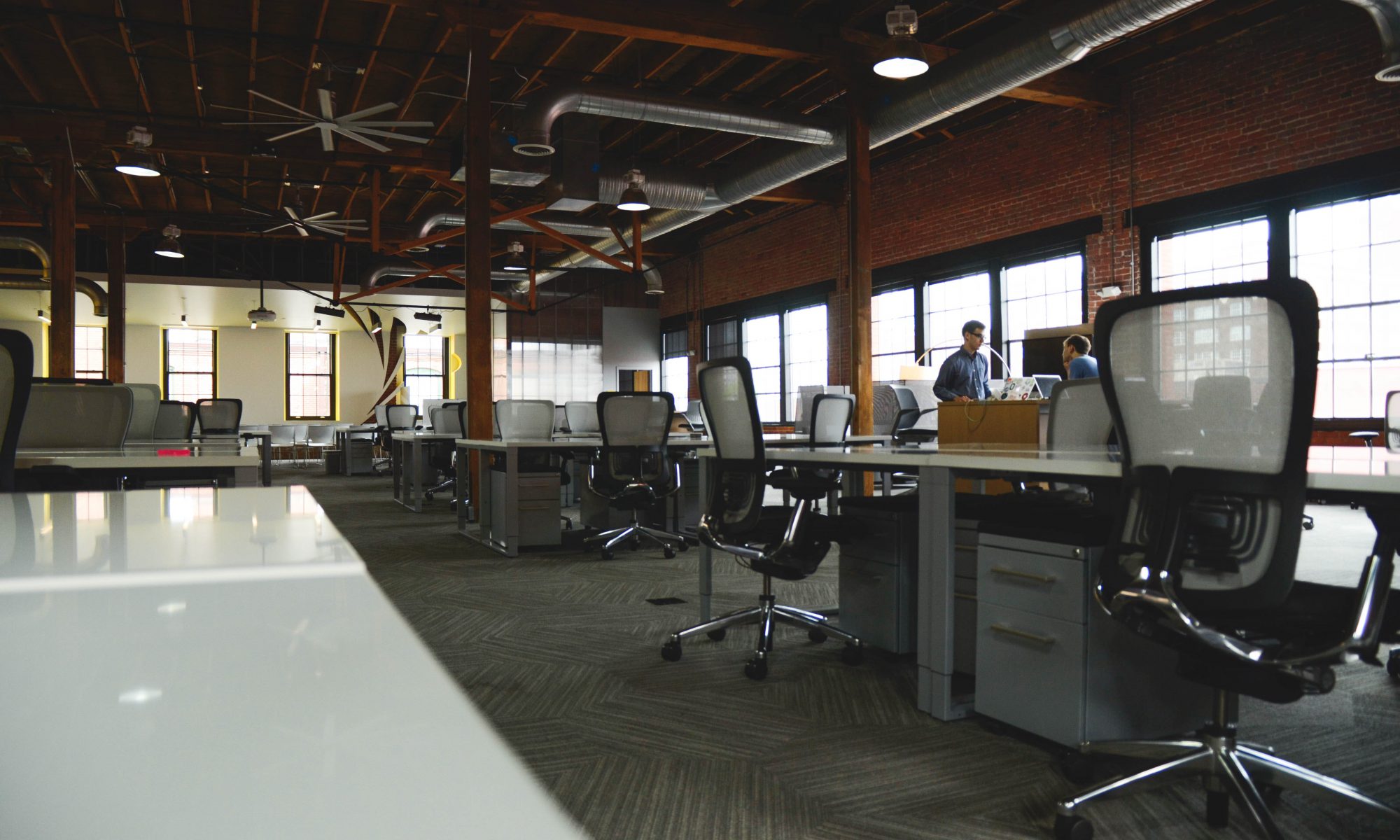The majority of companies in the United States use open office layouts. Whether that design includes communal work tables or low-partition workstations, these offices are a far cry from the partitioned offices of the past.
“Silicon Valley firms were among the first to champion open workspaces, where employees sit shoulder to shoulder at communal desks,” explains an office design analysis in Forbes. “They tore down walls and eliminated private offices as outdated symbols of corporate hierarchy. An open layout seemed to convey a modern, break-all-the-rules attitude. It also provided a stark contrast to the soulless cubicle farms skewered by Dilbert comics and films like Office Space.”
The Benefits of an Open Office
It’s understandable why many businesses have embraced the open office layout. With walls and other partitions removed, it’s easier for your employees to connect. Better collaboration is often the objective, which makes sense from a practical standpoint. When you can look over to a colleague’s desk and immediately see that he’s sitting there, it seems you’d be more likely to stroll over for a conversation.
“It really creates an environment where people can collaborate; they can innovate together,” said Lori Goler, chief people officer at Facebook, which is known for promoting open office concepts. “There’s a lot of spontaneity in the way people bump into each other, just a really fun collaborative creative space.”
In conjunction with the collaboration, many businesses employ an open office in hopes that it will increase socializing and improve employee morale. Traditional workplace designs run the risk of reinforcing hierarchies, with corner offices for the elite, modest offices for the leaders, and cubicles for the working drones. By leveling the playing field, it’s easy to see how an office could become more cohesive.
Additionally, open offices are more cost-effective. They allow you to fit more people into a smaller space, with less furniture required. This savings makes open offices compelling for small businesses operating on tighter budgets.
The Drawbacks of an Open Office
Once you know the desired benefits of an open office, it’s important to review their effectiveness in practice. Many employees actually report issues with such layouts, ranging from obnoxiously loud coworkers to stinky lunches being eaten much too close for comfort.
Researchers from the Harvard Business School conducted what is widely considered the preeminent analysis of open offices. They traced employee movements with electronic badges, recorded office conversations with microphones, and kept tabs on interoffice email usage.
The result? The open offices in the study did not achieve the collaboration hoped for. Instead, face-to-face interactions plummeted by 70%. Conversely, email use went up 50%. It appeared that the extreme openness of the layout led to employee withdrawal. The only way to cope was less personal interaction.
“I don’t know that I had a clear hypothesis about this research question at the start,” explains the study’s coauthor, Associate Professor Ethan Bernstein. “You hear so much said about how much people don’t like open offices, but there’s also so much said about the vibrancy of an environment when you open space and data up, about the collisions and interactions that will happen there. For me, the promise of open offices was at least as compelling as the traps. Would everyone bustle with productive collisions or simply put their big headphones on and become numb to the space?”
It seems that Professor Bernstein’s theories regarding the inherent traps associated with open offices are legitimate. Participants in the studies did tend to put on headphones, hunch toward their computers, and try to block everything else out. Not only was this an effort to eliminate abundant distractions, but workers also felt the need to look busy all the time because they were in full view of their leaders and coworkers.
What Office Layout Should You Use?
While the Harvard Business School research exposed potential problems associated with the open office layout, these findings don’t mean it’s necessarily a bad option for your small business. Every office includes unique individuals who interact in dynamic ways.
If you’re wondering what layout would work best for your office, here are some considerations:
What do your people want?
You may have your ideas about what the office needs, but always make sure your employees have a voice. After all, the quickest way to hurt morale is to impose major changes without using the type of collaboration your office layout would hope to spur.
How can you improve interaction?
Even if an open layout isn’t the best fit for your business, perhaps you can incorporate some of the positive elements. You can start by improving the socializing in your office by simply scheduling more opportunities for your people to get together.
Are you using sound masking?
If you have an open office concept and noise is an issue, you need to implement some form of sound masking. White noise helps minimize distracting conversations and sounds. The result can be happier, more productive people.
How flexible are things for your employees?
You can also reduce distractions and frustration among your people by offering increased flexibility. At the most basic level, you may let them customize their schedules (such as coming in earlier in the morning to get more unfettered work time). You can also think about letting them work a 4/10 schedule or even work from home once a week.
Whether you think cubicles are essential or can’t wait to make your office as open as an African savanna, it’s important to keep your people top of mind. What will help them feel most connected? What will help them be most productive? What will help them be most happy? Answer these questions first and your own business priorities will ultimately be served.










